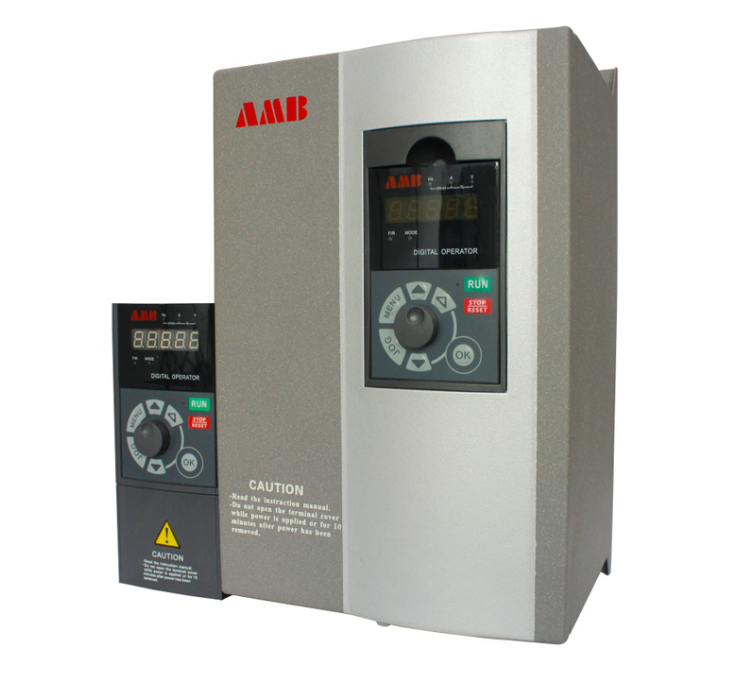
Inverters are divided into two types according to the frequency conversion mode: AC/DC/AC and AC/AC inverters. Here we take the widely used universal "AC/DC/AC" as an example to talk about its structure and working principle. As can be clearly seen from the above figure, the AC/DC/AC inverter is also called an indirect inverter. It means that when working, the 50Hz power frequency AC power is first converted into pulsating DC power through the rectifier module unit, and then passed through the intermediate circuit circuit. The capacitor is filtered into a relatively smooth DC power supply, which provides power supply energy for the IGBT inverter module. The turn-on and turn-off frequencies of these IGBT modules are controlled by the IC main control board chip system. At this time, the inverter module circuit converts the high-voltage DC power supply into AC power with adjustable frequency and variable voltage, and then provides it to the three-phase AC load. Phase asynchronous motor, inverter control.
Since the main components used internally are semiconductor devices, and many man-made and other factors inevitably appear in the use of these components, it is easy to cause damage to the frequency converter and damage to the three-phase motor. In this case, a fault-prone signal detection and sampling circuit is designed in the electronic circuit to monitor the running status of the inverter in real time. Once a fault occurs, the detection and sampling system will immediately feed back to the IC main control board, and it will immediately send out the corresponding It will stop the operation, and display the fault phenomenon and fault location on the LED display. People will check and repair according to the fault code, and restart the inverter after troubleshooting. In the internal control of general inverters, the parking and braking modes can be controlled by the inverter. In general, inverters have multiple stop modes and braking mode settings or selections, such as deceleration to stop, free stop, and deceleration to stop +Brake, etc., so as to avoid the impact of the frequency converter on the motor and mechanical parts, so that the entire system is safer and more reliable.
In fact, there are many protection circuits inside the inverter, but because the user did not involve some phenomena, they did not study it in detail. The internal protection of the frequency converter can realize various abnormal phenomenon protection functions of the frequency converter itself and the load motor, which mainly include overheating (overload) protection and stall protection.
① Overheating (overload) protection function: The overheating (overload) protection of the inverter is overcurrent protection or overheating protection. All inverters are equipped with electronic thermal protection function or use thermal relay for protection. The overheating (overload) protection function monitors the temperature of the load motor and the inverter itself. When the load inertia controlled by the inverter is too large or the motor is locked due to the load being too large, the output current exceeds the rated value or the AC motor is overheated. The protection circuit operates to stop the motor and prevent damage to the inverter and the load motor.
②Protection against loss of speed: Stall refers to the fact that when the acceleration time of the motor given by the inverter is too short, and the change of motor acceleration is far behind the change of the output frequency of the inverter, the inverter will trip due to excessive current and stop running. In order to prevent the aforementioned stalling phenomenon from causing the motor to operate normally, the inverter is equipped with a stall-preventing protection circuit, which can detect the size of its output current and perform comparison operations to perform automatic frequency adjustment control. When the acceleration current is too large, the acceleration frequency is appropriately slowed down, and when the deceleration current is too large, the deceleration frequency is also appropriately slowed down to prevent stalls.
The current vector frequency converter can also adjust the torque of the motor, so that it can protect the motor and mechanical equipment from damage through the internal settings of the frequency converter, thereby ensuring the continuity of the normal operation of the mechanical equipment driven by the frequency converter and the quality of the product. reliability.

|
|

|
| The public, | Mobile station |
 0755-81719517
0755-81719517
|
|
 0755-81719530 0755-81719530 |
 amb@ambition.com.cn amb@ambition.com.cn |
 Floor 1, 5 and 6, building 7, lijincheng science and technology industrial park, gongye dong road, longhua new district, shenzhen Floor 1, 5 and 6, building 7, lijincheng science and technology industrial park, gongye dong road, longhua new district, shenzhen |
|